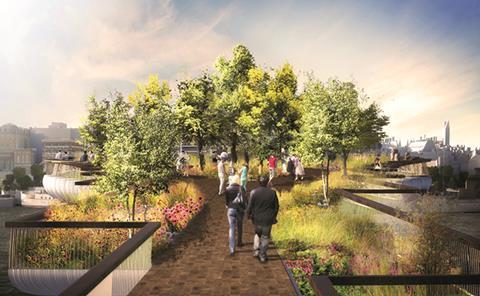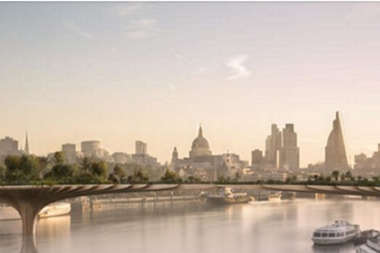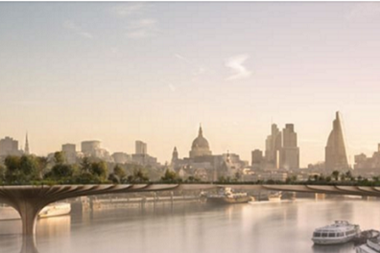In the 1940s, one of the visionary plans for London by the town planner Sir Patrick Abercrombie contained a proposal for a bridge across the Thames with crossing points pretty much where the Garden Bridge was supposed to have been constructed.

Other proposals for the same route have come and gone, including an inhabited structure.
The Garden Bridge was by far the most serious proposition, though, and until quite recently it looked as if it might well happen. It was popular with the public; private pledges of money were approaching £100m; the mayor was supporting the proposal; and it had planning permission.
In typical British fashion, we have managed to snatch defeat from the jaws of victory.
A potentially magnificent London landmark, a visitor attraction if ever there was one, has been sacrificed on a mixed cross of political vendetta, local politics, professional jealousy and a charitable trust that found itself unable to fight on multiple fronts.
It is usually a mistake to describe this sort of event as a tragedy - nobody has died. But on the other hand, the almost casual decision to write off nearly £40m of public expenditure by a London mayor, who is always complaining about shortages of funding, is bizarre.
But then the behaviour of Sadiq Khan throughout this exercise has suggested that rather than being the shrewd and clear-thinking individual that made people like me vote for him, he is in fact a routine politico, uninterested in the big picture but very interested in scoring political points.
For example, he has never attacked the idea of the bridge or the design. If anything, he gave the impression that he was a supporter and did not immediately scrap the project on being elected. As things turned out, he was just biding his time to see how he could wreck an initiative backed by his predecessor Boris Johnson.
It’s a pity, since one of the points about an elected mayor for the capital was to get away from the steam-driven thinking that informs (if that is the right word) Westminster politics.
No competition
Weirdly, Khan would not meet the chair of the trust, Lord Davies. He accepted without question a hatchet-job report he commissioned from Margaret Hodge, a virulent opponent of anything Tory for her entire political life, on the procurement process. He refused to contemplate any way of generating income from the bridge, only talking about potential future financial commitments without considering the potential benefits of millions of visitors.

As far as procurement is concerned, you only have to remember one thing, which, to be fair, was noted in the Hodge report: there was never any need for Transport for London to hold a ‘competition’ to pick a bridge designer. Under EU procurement rules, it is perfectly in order for a public authority to make a direct appointment.
In this case, a full design had already been developed by Thomas Heatherwick, Arup and landscape architect Dan Pearson. It was utterly pointless to hold a competition that was bound to be a silly exercise. Why did TfL do it? Because it was bending over backwards to be seen to be politically correct in respect of the bean-counter culture of regulation.
The procurement was a botched process and gave the miserablists opposed to the project the chance to thrash about expressing righteous outrage. They never mentioned that a competition was unnecessary; they just kept droning on about how other bidders would have done it cheaper.
The moment public money is involved, the rules of engagement inevitably change
Their attack on creativity, voluntary initiative and belief in London has proved successful because of a weak mayor, a divided media (though the Evening Standard, which stands up for London, has been a consistent supporter) and a quite aggressive campaign by people who live on the South Bank who don’t like the idea of more visitors on what they arrogantly claim is ‘their’ territory.
In retrospect, the Garden Bridge Trust should never have accepted financial support from the mayor or TfL. The moment public money is involved, the rules of engagement inevitably change. It could have run a more community-engaged campaign. But then a bridge across the Thames is a city-wide, not just local, idea.
The worry now is that anyone with smart ideas for a better London will find something better to do than pursue it in a city whose political leadership seems unable to understand the need for consistent patronage, preferring parochial, rather pitiful, point-scoring.






























2 Readers' comments